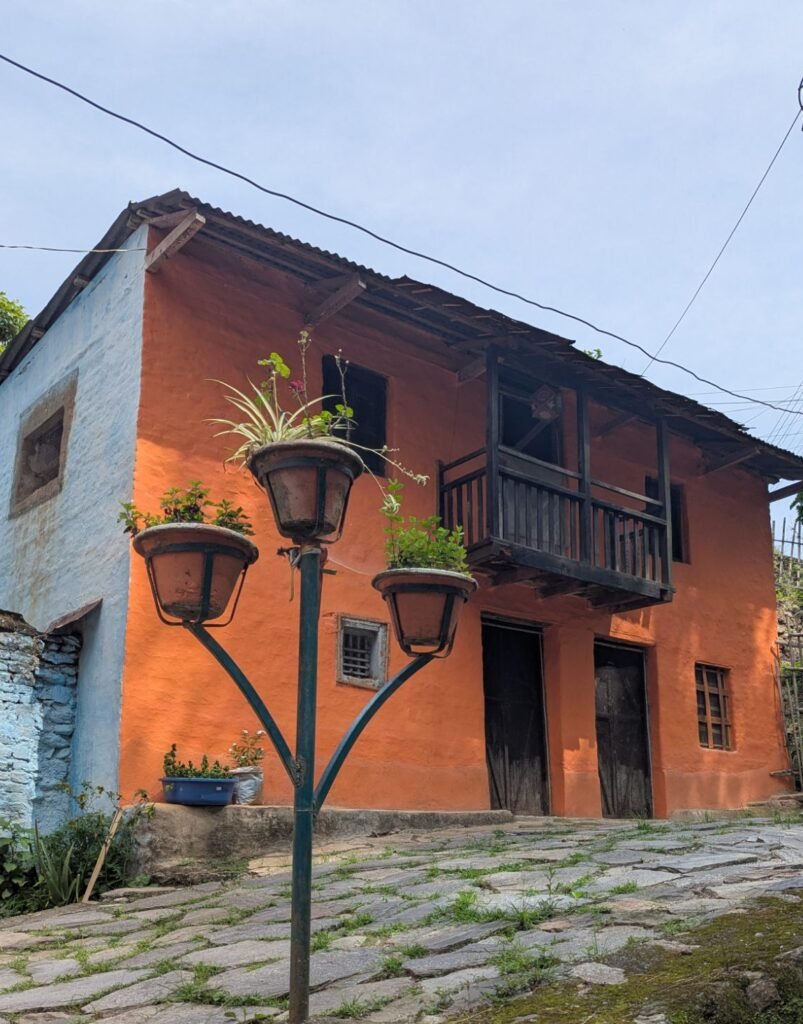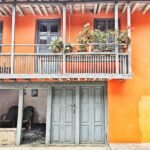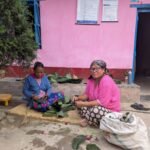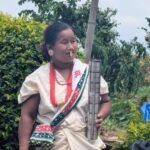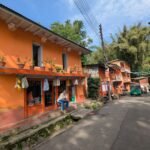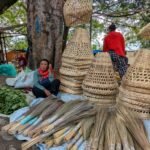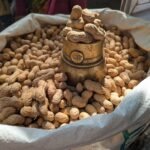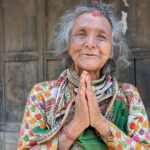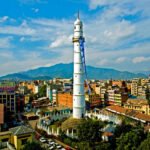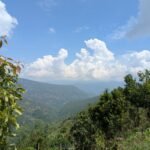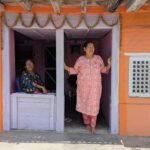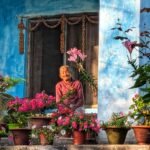If you’d have mentioned Dhankuta, Nepal a couple of years ago, most people in the travel industry would stand around, scratch their heads and say, nope, no idea.
Perhaps if you’d been the juice man from Del Monte (showing my age?), it may have been on your radar, for it was, until quite recently, the orange growing capital of Nepal.
Now, thanks to climate change leading a reduction of water in the region, this is no longer the case, meaning that one of the major sources of income is under threat. But, rather than bemoan their fate, the locals have decided to take matters into their own hands and innovating. Firstly they have decided to produce avocados, more water intensive than oranges but a more productive yield for less crop, and the other is to turn to tourism, believing that they have something new to offer.
And this got me interested.
I love a new destination and to be at the inception of one is always exciting. I’ve seen many a destination develop over the years, some incredibly well and others, well, rather too well. Could a destination be created that had control measures in place to be climate resilient and also to prevent over tourism? Also, how could this be set up with minimum cost and damage to existing infrastructure?
So, when, being the UK representative for the Community Homestay Network, I had the privilege of being invited on their Community Connect program in 2025 and, seeing that Dhankuta was one of the three itineraries on offer, put my name down in bold and underlined.
You see, in addition to the above, there was another intriguing mystery about the place that had caught my attention. I’d heard Dhankuta had been the place of exile for a king. Who, when and why were the obvious questions. No one could really shed any more light on this mystery at first, but I was determined to get to the bottom of it.
A Climate-Resilient Destination in the Making
The first thing that drew me to Dhankuta is that it is being set up, right from its inception, as a climate resilient destination. Tourists also take up a lot of water, what with preferring a flushing toilet and showers and the like. So, how can this destination already beginning to suffer from a shortage of water (the effects of climate change) prepare for an influx of people?
The answer lies in partnership, in particular, a partnership between Dhankuta and Community Homestay Network. You see, the infrastructure is already there. There are charming hamlets and villages surrounding Dhankuta itself, and CHN specialises in transforming off beat areas by assisting the local community in developing their homes into homestays. They seek out the ones that might be suitable, usually where there is a small cluster of homes, and then provide training on cleanliness, hygiene, and the hosting of inbound travellers. No new buildings in the form of hotels etc are required and little extra pressure is put on infrastructure. They then also provide marketing and booking assistance via the CHN HQ in Kathmandu. It’s a win win for all.
In addition, the International Centre for Integrated Mountain Development (ICIMOD) is actively engaged in the region to build and sustain responsible tourism through the HI-GRID project, funded by the Australian Government. The initiative supports local communities in integrated watershed management and tourism development, in collaboration with partners such as Community Homestay Network, Smart Paani, Dhankuta Municipality, Chhathar Jorpati Rural Municipality, and HUSADEC (Human Rights Social Awareness and Development Centre). Together, they are working towards shaping a climate-resilient tourism destination.”
Naturally this makes it all sound simple, there’s a lot more that goes on behind the scenes, but we don’t need to get bogged down in all that here. There are several articles already out there and others in the making that will be covering this work in much more detail.
So, what does Dhankuta have to offer as a destination?
It was already a beautiful small town wall to wall with traditional architecture, but the locals, being forward thinking then thought to paint the town, not red no, we did that in RK’s, the only ‘bar’ in town, but a wonderful, vibrant orange, keeping their theme going, continuing their story, its lineage if you please. It’s where there’s still a traditional local market once a week, selling local produce, pots and kukris amongst other things, there’s still a distinct lack of plastic, harking back to a time before it plagued the world. Homebased experiences have opened up to offer local meals one even served up some home-brewed wine, of Lychee and Guava, and quite palatable it was too. There are some lovely treks, one to a sunrise point and, mountains there may not be, but beautiful views over the surrounding countryside and hamlets are plentiful. It is certainly unique.
I’m also going to throw in here, why do we always have to be ‘doing’? Why not take time to get to know your hosts and learn a little about their day-to-day life, dreams and aspirations, not forgetting culture and… Sharing a bit about yours. We so often forget in our desperation to travel and discover, that the people who are hosting us, particularly in such remote communities, are as fascinated by us as we are about them. Take time to share.
The People: Guardians of Kings!
Which brings me rather nicely onto the people! Who do you meet? Who are your hosts?
Well, the local tribe are the Aath Pahariya’s, and their name derives from them being the guardians of the king. They protected him 24/7 in shifts called ‘aath pahar,’ which means eight watches, or ‘all day,’ in Nepali – and it’s from this shift system that they take their name. Yes, we’re back to that mysterious king I mentioned earlier. “Which king?” I wanted to know. Again, the response was vague, such is the case with no written history and a culture slowly dying out with modernisation. I managed to glean from locals that the Aath Pahariya had their own Kirat King (Kirat was an ancient kingdom before the unification of Nepal) and this could be who they protected – it makes sense.
But then I’d also heard that Dhankuta had been home to a king in exile. Who was this king, could they have also protected him? Again, blank stares all round. I put it to James, one of the CHN team and tasked him with the research.
Solving the Mystery: The Exiled Reformist
He had to delve a little bit into Nepal’s history: The Rana Regime (1846-1951) was established after Jung Bahadur Rana’s rise to power following the Kot Massacre. (The Kot Massacre was a violent court ‘purge’ where Jung Bahadur Rana and his brothers systematically eliminated their political rivals in one night, killing 30-40 nobles, military officers, and palace guards including the Prime Minister during a midnight assembly at the royal palace This single event allowed Jung Bahadur to seize absolute power and establish the hereditary Rana autocracy that would rule Nepal for over a century. They maintained close ties with the British and deliberately kept Nepal isolated from modernization until their rule ended in 1951.
One of their rulers, Dev Shamsher Jung Bahadur Rana, Nepal’s 9th Prime Minister, only ruled for 144 days in 1901 before his own Rana relatives exiled him. The reason? His progressive vision which included abolishing slavery, introducing social welfare programs, promoting education, and establishing a free press – reforms that his relatives perceived would threaten their established autocratic order. And where was he exiled to? You guessed it, Dhankuta, East Nepal from where he served as regional governor. So, we have a prime minister but no king.
However, despite his brief tenure as Prime Minister, he earned the title “The Reformist” and left a lasting legacy as a visionary leader way ahead of his time, which continued, we assume, with his move to the east. It’s all a little bit vague, and you can see how stories are made because Dev Shamsher did actually become known locally as “Dhankute Raja” (King of Dhankuta). Finally, I found my king!
He is also believed to have had Jor Dharahara (Twin Dharahara) constructed around the 1950s, a 25-foot replica of Kathmandu’s famous Dharahara tower. The original Dharahara was built as a military watchtower and served as a symbol of Nepal’s strength and unity, used to summon soldiers and make government announcements. By building his own version in Dhankuta, Dev Shamsher was creating a symbol of governance and authority in his new region – showing that even in political exile, he remained committed to developing and protecting his adopted home.
The Future: Orange Town’s New Chapter
Perhaps it’s no coincidence that Dhankuta finds itself once again at the forefront of progressive thinking. Is there something in the very essence of this place that seems to attract – or perhaps nurture – forward-thinking minds who aren’t content to wait for change to come from elsewhere?
Was it that Dev Shamsher’s found fertile ground for his progressive ideas in Dhankuta? Or could it be that his reformist DNA was planted in the soil here, creating a culture that instinctively looks forward rather than backward. Where other communities might resist change, Dhankuta embraces it. When the oranges failed due to climate change, they didn’t bemoan their fate – they switched to avocados and tourism. When water became scarce, they didn’t just hope for the best – they pioneered water harvesting and climate-resilient tourism models. To create accommodation they collaborated with the forward thinking and pioneering Community Homestay Network.
What we’re seeing here isn’t just adaptation; it’s innovation with purpose. Dhankuta seems to have inherited that same progressive spirit that once threatened the Kathmandu establishment and the town that once sheltered Nepal’s most forward-thinking leader has become a living laboratory for the kind of sustainable development the world desperately needs, turning its back on the traditional, established tourism model.
Was it destiny? Or did Dev Shamsher’s brief but impactful residence create a cultural shift that ripples through generations? Either way, Dhankuta continues to prove that sometimes the most innovative thinking happens not in the centres of power, but in the places where progressive minds go to turn their visions into reality.
I travelled courtesy of Community Homestay Network with logistics arranged by Royal Mountain Travel Nepal.
Philippa Kaye is the founder of Indian Experiences
Contact: Philippa@indianexperiences.com
Whatsapp: +447966025330


